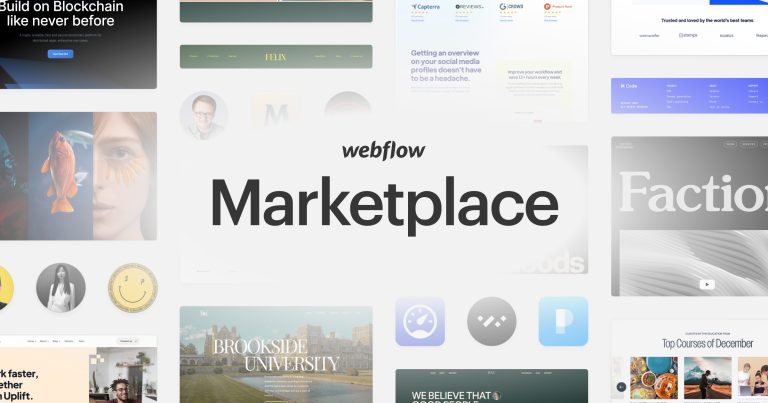UX Design Masters: 5 Tips for Choosing the Right Career Program
Are you interested in pursuing a UX Design Masters degree? UX design is the process of creating products and services that are user-friendly, accessible, and enjoyable. While the path to becoming a UX designer demands substantial knowledge, practice, and creativity, many opt for a Masters in UX Design to refine these skills.
This guide offers five key tips to help you select the most suitable UX Design Masters program for your career. By the end of this guide, you will gain clarity on how to choose a program that aligns with your aspirations in the UX design arena. Let’s begin your journey!
What are UX Design and UX Design Masters Program?

UX design involves crafting products and services that are user-friendly and appealing. This field centers on human-product interaction, striving to enhance customer satisfaction and loyalty. It encompasses all facets of a user’s experience with a product or service, including usability, value, appeal, brand image, and performance.
A UX Design Masters Program, a specialized gradate degree, focuses on user experience design. It equips students with advanced skills and knowledge in UX design, preparing them for various roles in the field such as UX researcher, designer, manager, or consultant.
Tip 1: Define Your Career Goals for a UX Design Masters Program
The initial step in selecting an ideal UX Design Masters program is to define your career objectives and expectations. Various programs cater to different career trajectories and roles within UX design, such as:
- UX Researcher: Focused on user research through methods like interviews and usability tests, a UX researcher deduces user needs and behaviors. They play a crucial role in analyzing and conveying these insights to the design team and stakeholders.
- UX Designer: Tasked with crafting user interfaces and interactions, a UX designer develops wireframes, prototypes, and user flows. They work closely with research, development, and testing teams to guarantee design usability and functionality.
- UX Manager: Responsible for leading the UX design team and overseeing projects, a UX manager handles planning, budgeting, and staffing. They also guide the organization’s UX design strategy and standards.
- UX Consultant: Offering specialized UX design advice to clients, a UX consultant conducts audits and provides recommendations, assisting in enhancing UX design processes and practices.
Before choosing a program, consider these questions:
- What are your immediate and future career aspirations in UX design?
- What are your strengths and areas for improvement in UX design?
- What working environments do you prefer as a UX designer?
- How much are you willing to invest in terms of time and finances for your UX design education?
Reflecting on these questions will help in clarifying your career goals and aid in selecting the most suitable UX Design Masters program.
Tip 2: Research Available UX Design Masters Programs
For the second tip, efficiently research available UX Design Masters programs using these methods:
- Official Websites: Explore the websites of UX design schools for detailed information on curricula, faculty, and fees. Engage with admissions officers for any specific inquiries.
- Online Directories: Use resources like the UX Design Institute or Interaction Design Foundation, applying filters for location, duration, and costs.
- Student Reviews: Read reviews and testimonials from current or former students to gain insights into their experiences and perspectives.
- Program Rankings: Assess and compare the programs using rankings on platforms such as Best UX Design Schools or Top UX Design Programs.
Critical Evaluation Factors:
- Accreditation Status: Check for accreditation from bodies like UXPA or ACM to ensure program credibility and standards.
- Curriculum Relevance: Confirm that the curriculum aligns with your educational objectives, covering vital UX design skills.
- Faculty Credentials: Evaluate the faculty’s qualifications and industry experience for effective learning and mentorship.
- Alumni Network: Explore the alumni network’s robustness and their professional accomplishments for potential networking and career opportunities.
- Job Placement Services: Consider the program’s employment success rate and the range of career services offered, like resume assistance and interview preparation.
Tip 3: Evaluate the Structure and Timeframe of UX Design Masters Programs

The third essential tip entails evaluating the structure and duration of UX Design Masters programs, which influence the overall learning journey:
- Online vs. Campus-Based Learning: Online programs provide flexibility and reduce expenses, but may offer limited interactive experiences. In contrast, campus-based programs enhance face-to-face interactions and resource access, at the expense of reduced flexibility and increased costs.
- Full-Time vs. Part-Time Studies: Opting for full-time studies accelerates program completion but demands more intensive commitment, while part-time studies offer flexibility at the cost of a prolonged educational timeline.
- Degree vs. Certificate Programs: Degree programs deliver a thorough, academically recognized education but require more time and financial investment. Certificate programs, focusing on specific skill areas, are more affordable but lack the comprehensive scope of degree programs.
Tip 4: Examine UX Design Masters Program Admission Criteria
For your fourth tip, it’s essential to thoroughly evaluate the admission requirements and application processes of UX Design Masters programs. Variations exist across programs:
- Online Applications: Be prepared to complete and submit online forms containing your personal and educational details, along with a program-dependent application fee.
- Portfolio Requirements: Assemble and submit a portfolio demonstrating your UX design projects, including elements like wireframes and user flows, with clear project descriptions.
- Essay Submissions: Write and submit essays that articulate your motivations and objectives in UX design, addressing the specific questions posed by the program.
- Interview Process: Engage in interviews to exhibit your understanding of UX design and the chosen program, while also preparing relevant questions about the program’s offerings.
Application Tips:
- Portfolio Presentation: Ensure your portfolio is meticulously organized and shared on professional platforms like Behance or Dribbble, showcasing your top UX design work.
- Resume/CV Clarity: In your resume or CV, concisely highlight relevant UX design skills and accomplishments, tailored to the program’s requirements.
- Personal Statement Craftsmanship: Develop a personal statement that vividly conveys your passion for UX design, supported by concrete examples and narratives.
- Interview Preparedness: Conduct thorough research on the program, maintain professionalism during interviews, and confidently engage with questions and answers.
Tip 5: Seek Insights from Graduates
For the fifth tip, actively seek insights from UX Design Masters program alumni. Their first-hand experiences offer valuable perspectives, including:
- Program Insights: Alumni provide detailed feedback on the program, covering aspects such as the curriculum, faculty, and resources, alongside its strengths and areas for improvement.
- Career Impact: Discover how the program influenced their career development, including skill enhancement and project involvement.
- Networking Opportunities: Alumni can facilitate connections within the UX design community, introducing you to specialists and industry circles.
Connecting with Ex-students:
- Social Media: Use LinkedIn, Facebook, and Twitter to find and interact with alumni, engaging in group discussions for broader insights.
- Forums: Participate in program-related discussions on Reddit, Quora, and Stack Exchange, asking questions or sharing viewpoints.
- Blogs: Read and interact with alumni posts on Medium, UX Collective, or UX Planet, offering feedback or sharing your own experiences.
- Events: Attend or organize events via Meetup, Eventbrite, or UXPA to meet alumni and expand your professional network.
Conclusion
Choosing the best UX Design Masters program for your career is not an easy task. It requires a lot of research, comparison, evaluation, and decision-making. However, it can also be a rewarding and enjoyable process, as you can discover and learn more about the UX design field and the UX Design Masters programs available.
If you are looking for a professional and reliable partner to help you with your UX design needs, you can contact Onext Studio, a leading digital agency that offers various services, such as web development, mobile app development, UX/UI design, and white label software. Onext Studio can help you create user-friendly, accessible, and enjoyable products and services that will improve your customer satisfaction and loyalty. Visit our website to learn more and get a free quote.




